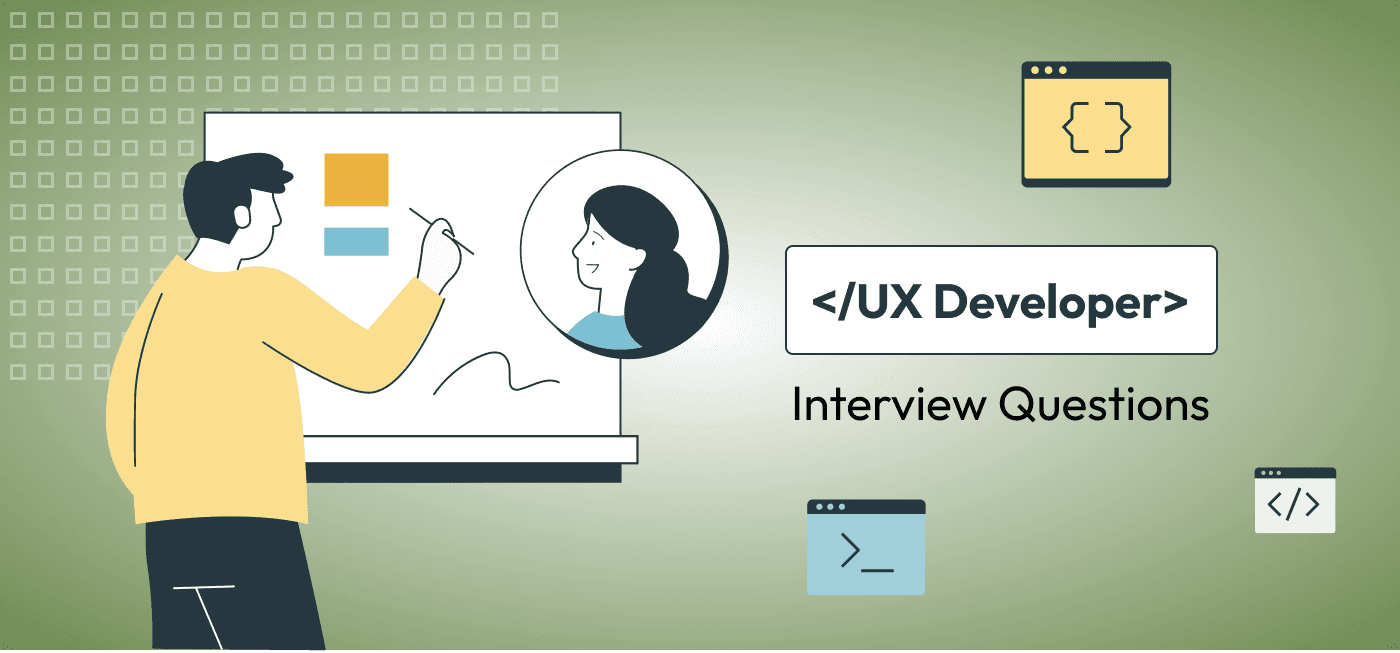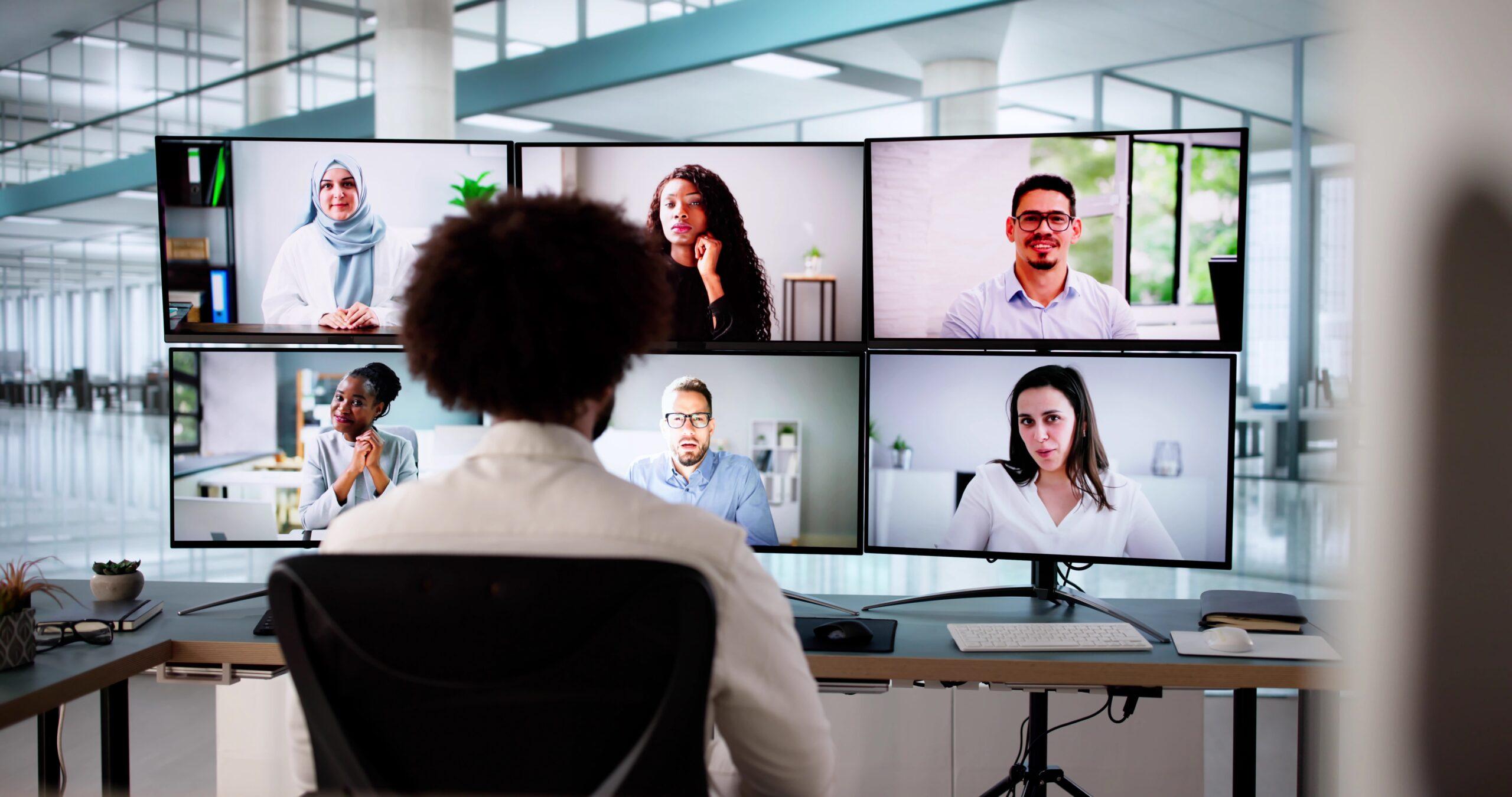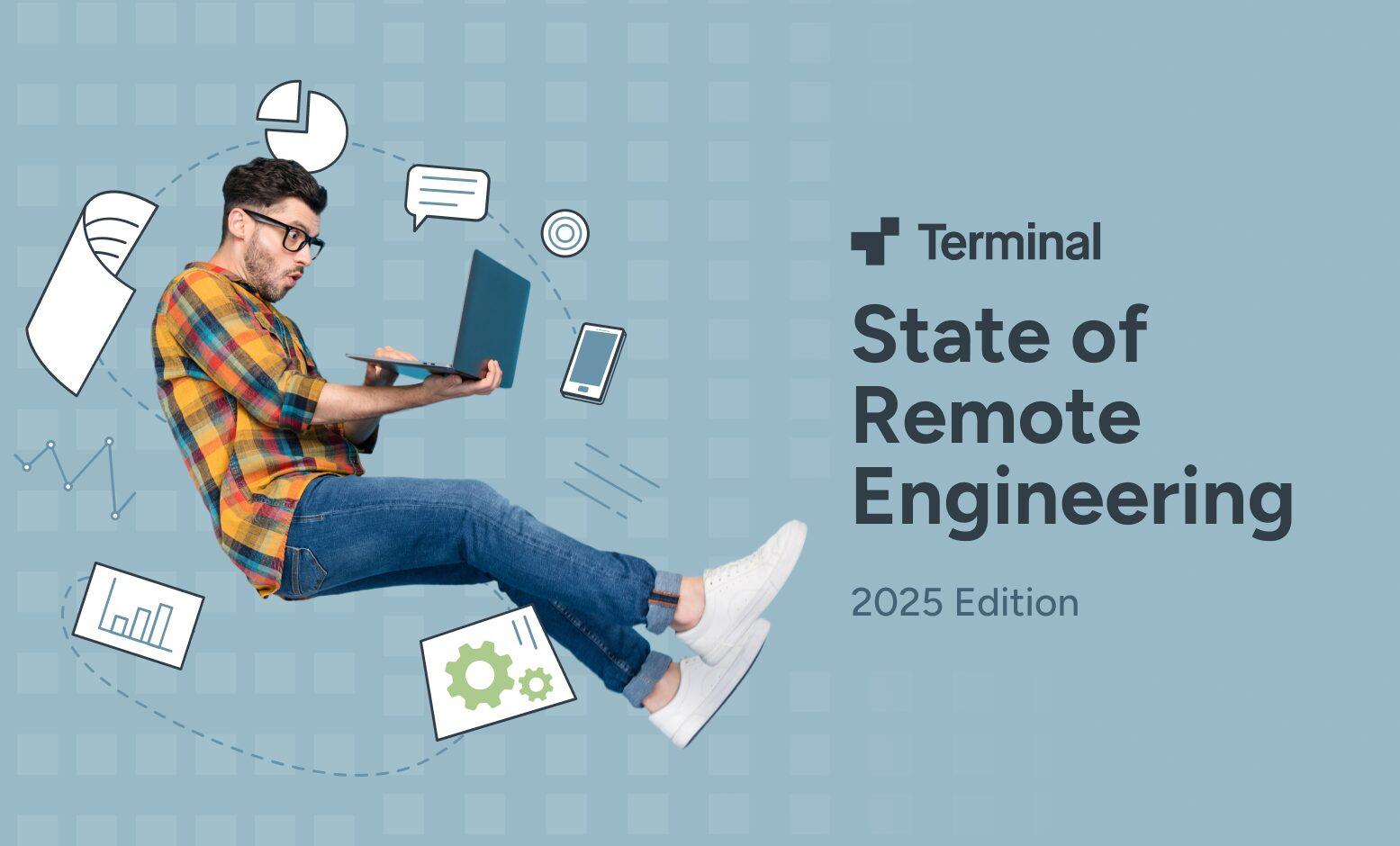
Hiring + recruiting | Blog Post
15 UX Developer Interview Questions for Hiring UX Engineers
Todd Adams
Share this post
Hiring a skilled UX (User Experience) Developer is essential for creating intuitive, user-friendly, and visually appealing applications. These professionals bridge the gap between user-centered design and front-end development, ensuring that digital products are both functional and delightful. To help you identify the right candidate, we’ve compiled a list of insightful questions to evaluate their technical expertise, problem-solving ability, and understanding of UX principles.
UX Developer Interview Questions
1. Can you explain your process for creating user-friendly and accessible designs?
Question Explanation:
This UX developer interview question evaluates the candidate’s understanding of user-centered design and accessibility. Their response should demonstrate familiarity with methodologies that prioritize usability and inclusivity.
Expected Answer:
A strong answer should include a step-by-step approach, such as:
- Conducting user research to understand the target audience’s needs and behaviors.
- Developing user personas to represent different types of users.
- Creating wireframes and prototypes to outline the layout and flow.
- Implementing accessibility standards, like WCAG, to ensure usability for people with disabilities.
- Conducting usability testing to validate the design’s effectiveness.
Example:
“I start by conducting user interviews and analyzing behavioral data to identify key pain points. Next, I create wireframes and prototypes using tools like Figma, ensuring that the designs meet WCAG guidelines, such as proper color contrast and keyboard navigation. I also run usability tests with diverse users to confirm the design’s accessibility and intuitiveness before finalizing the product.”
Evaluating Responses:
Look for specific methodologies like usability testing and adherence to accessibility standards. Strong candidates will mention tools, frameworks, and an iterative approach.
2. How do you approach balancing aesthetics with functionality in a web or app project?
Question Explanation:
This UX developer interview question assesses how well the candidate can strike a balance between creating visually appealing designs and ensuring they serve a functional purpose.
Expected Answer:
The answer should emphasize prioritizing user needs while maintaining a cohesive visual design. Candidates might discuss frameworks like the Gestalt principles for design or mention user-first approaches. They should acknowledge that aesthetics can enhance usability when implemented thoughtfully.
Example:
“My approach is to ensure functionality first, making sure the layout and navigation meet user goals. Once the structure is solid, I refine the aesthetics by using a consistent color palette, typography, and spacing to enhance the experience. For example, I use micro-interactions to guide users subtly, which adds aesthetic appeal without overwhelming functionality.”
Evaluating Responses:
Strong answers will demonstrate an ability to prioritize usability while articulating the role of aesthetics in supporting user engagement. Watch for examples from real projects.
3. Describe a project where you improved the user experience significantly. What steps did you take?
Question Explanation:
This UX developer interview question explores the candidate’s problem-solving skills, practical experience, and understanding of user-centered design principles.
Expected Answer:
A comprehensive answer will describe:
- The problem or challenge.
- Steps taken to analyze the issue (e.g., user feedback, heatmaps).
- Specific solutions implemented to address the problem.
- The outcome, ideally supported by metrics (e.g., increased engagement, reduced bounce rate).
Example:
“In one project, users struggled to complete a multi-step checkout process. I analyzed user feedback and session recordings, then simplified the flow from five steps to three by consolidating information inputs. I also added a progress bar to reduce user anxiety. Post-implementation, checkout completion rates improved by 25%, and user complaints decreased by 40%.”
Evaluating Responses:
Focus on whether the candidate used a structured approach and can quantify the impact of their actions. Look for specific tools or research methods they employed.
4. How do you integrate user feedback into your design and development process?
Question Explanation:
This UX developer interview question evaluates the candidate’s ability to collect, analyze, and implement user feedback effectively in an iterative design process.
Expected Answer:
An ideal answer will describe using direct feedback (e.g., user interviews) and indirect feedback (e.g., analytics data). They should also explain how they prioritize feedback to avoid conflicting or impractical changes.
Example:
“I collect user feedback through surveys, interviews, and usability testing sessions. For example, in a recent project, I conducted a post-launch survey that revealed issues with navigation. I prioritized recurring themes and worked with the development team to implement changes iteratively, ensuring no disruption to ongoing operations.”
Evaluating Responses:
Look for examples of integrating both qualitative and quantitative feedback. Candidates should demonstrate the ability to distinguish between actionable and less critical feedback and describe how they collaborated with stakeholders to make improvements.
5. What tools and technologies do you use for wireframing, prototyping, and user testing?
Question Explanation:
This UX developer interview question assesses the candidate’s familiarity with industry-standard tools and their ability to effectively use them in different phases of UX development.
Expected Answer:
The candidate should list specific tools for each phase and explain why they use them. For example:
- Wireframing: Tools like Figma, Adobe XD, or Sketch for creating initial layouts.
- Prototyping: Tools like Axure, InVision, or Figma for building interactive prototypes.
- User Testing: Tools like UsabilityHub, Maze, or Hotjar for collecting feedback.
Example:
“For wireframing, I use Figma because it’s versatile and allows collaboration. When I need to build high-fidelity prototypes, I rely on tools like Adobe XD or Axure. For user testing, I prefer tools like Maze to collect direct feedback and Hotjar for analyzing heatmaps and session recordings. These tools help me ensure the design aligns with user needs and expectations.”
Evaluating Responses:
Look for a clear understanding of when and why to use specific tools. Strong candidates will mention collaborative features and how the tools improve their workflow.
6. How do you ensure that your designs are responsive and work seamlessly across different devices and screen sizes?
Question Explanation:
This UX developer interview question tests the candidate’s knowledge of responsive design principles and techniques for adapting designs to various devices.
Expected Answer:
A strong response should include techniques like:
- Flexible layouts using CSS Grid and Flexbox.
- Media queries for adapting styles based on screen size.
- Testing on multiple devices and using tools like Chrome DevTools or BrowserStack.
- Prioritizing a mobile-first approach to design.
Example:
“I start by designing for the smallest screen size first and progressively enhance the layout for larger devices. I use CSS Flexbox and Grid to create flexible layouts and implement media queries to adjust breakpoints. Additionally, I test designs on real devices and tools like BrowserStack to ensure compatibility across platforms.”
Evaluating Responses:
Look for practical experience in responsive design techniques and a mobile-first approach. Candidates should demonstrate awareness of tools for testing and debugging.
7. Can you explain the importance of usability testing, and how do you conduct it?
Question Explanation:
This UX developer interview question evaluates the candidate’s understanding of usability testing and their approach to identifying and addressing design flaws.
Expected Answer:
The candidate should explain that usability testing ensures the product meets user needs and expectations by identifying pain points. They should outline a process, such as:
- Defining goals and scenarios for testing.
- Recruiting representative users.
- Observing users interact with the product while recording their actions.
- Analyzing findings and iterating on the design.
Example:
“Usability testing helps uncover issues users face while interacting with the design. I typically define clear test scenarios, recruit diverse participants, and use tools like UserTesting or Lookback for remote sessions. After observing and documenting user behavior, I summarize insights and prioritize fixes based on the severity of the issues.”
Evaluating Responses:
Strong responses will reflect an understanding of structured testing methods and tools. Candidates should also emphasize iteration and improvement based on findings.
8. How do you collaborate with developers, designers, and other stakeholders in a UX project?
Question Explanation:
This UX developer interview question evaluates the candidate’s communication and teamwork skills, which are crucial for bridging design and development.
Expected Answer:
The candidate should describe using collaborative tools (e.g., Slack, Jira) and processes like design handoffs. They should emphasize clear communication, regular meetings, and incorporating feedback from all stakeholders.
Example:
“I collaborate with developers by creating detailed design specifications in Figma or Zeplin and ensuring that assets are ready for implementation. I hold regular sync meetings to clarify requirements and address challenges. With stakeholders, I present prototypes and gather feedback iteratively to ensure the design aligns with their goals. For example, in a recent project, I facilitated workshops to align business goals with user needs before starting the design.”
Evaluating Responses:
Look for examples of effective communication and proactive collaboration. Candidates should demonstrate experience with tools and strategies that promote teamwork and ensure project alignment.
9. What is your understanding of web accessibility standards (e.g., WCAG), and how do you implement them?
Question Explanation:
This UX developer interview question evaluates the candidate’s knowledge of accessibility guidelines and their ability to create inclusive designs for all users.
Expected Answer:
A good answer should include familiarity with the Web Content Accessibility Guidelines (WCAG) and specific techniques to meet its standards:
- Perceivable: Text alternatives for images, proper color contrast.
- Operable: Keyboard navigation, focus management.
- Understandable: Clear instructions and error handling.
- Robust: Using semantic HTML and ARIA roles where necessary.
Example:
“I ensure compliance with WCAG standards by starting with semantic HTML, which improves screen reader compatibility. I use tools like Lighthouse and Axe to identify and fix accessibility issues. For instance, I ensure proper color contrast ratios and provide text alternatives for images. I also test keyboard navigation to ensure all interactive elements are accessible without a mouse.”
Evaluating Responses:
Look for practical techniques and tools for implementing accessibility. Candidates should demonstrate an understanding of WCAG principles and mention specific methods for testing and fixing accessibility issues.
10. How do you stay updated on the latest trends and best practices in UX design and development?
Question Explanation:
This UX developer interview question gauges the candidate’s commitment to continuous learning and staying current in the rapidly evolving field of UX.
Expected Answer:
An ideal answer includes strategies such as:
- Following industry blogs, podcasts, and social media accounts (e.g., Smashing Magazine, Nielsen Norman Group).
- Participating in online communities (e.g., UX Collective on Medium, Reddit UX).
- Taking online courses or attending conferences and workshops.
Example:
“I follow blogs like Nielsen Norman Group and Smashing Magazine for insights on usability and design trends. I also engage with the UX community on Medium and LinkedIn to exchange ideas and stay inspired. Additionally, I attend events like Adobe MAX and take courses on platforms like Coursera to deepen my skills.”
Evaluating Responses:
Strong candidates will mention a mix of resources, active community participation, and formal learning opportunities. Their answer should convey a passion for professional growth.
11. What role does user research play in your design process, and how do you conduct it?
Question Explanation:
This UX developer interview question tests the candidate’s understanding of the importance of user research and their ability to gather and analyze user insights effectively.
Expected Answer:
The candidate should highlight the importance of user research in identifying user needs, pain points, and preferences. They should outline methods such as:
- Conducting interviews, surveys, and focus groups.
- Observing user behavior through usability tests.
- Analyzing quantitative data from tools like Google Analytics or Hotjar.
Example:
“User research is the foundation of my design process. I start with interviews and surveys to gather qualitative insights, followed by analyzing analytics data to uncover trends in user behavior. In one project, I conducted usability tests using Lookback to observe how users navigated a mobile app, which revealed a confusing menu structure. Based on this feedback, I redesigned the menu and reduced task completion time by 30%.”
Evaluating Responses:
Look for structured approaches and specific research methods. Strong answers will include examples of how research directly informed design decisions.
12. Can you explain the concept of user personas and how you utilize them in a project?
Question Explanation:
This UX developer interview question examines the candidate’s understanding of user personas and how they use them to guide design decisions.
Expected Answer:
User personas represent archetypal users based on real data. The candidate should describe how they create personas using user research and how personas help ensure the design addresses user needs.
Example:
“User personas help me empathize with the target audience and design solutions that meet their goals. I develop personas by analyzing user data from interviews, surveys, and analytics. For example, in an e-commerce project, I created personas like ‘Busy Professional’ and ‘Savvy Shopper,’ which helped prioritize features like a quick checkout process and robust filtering options. These personas guided the team throughout the project.”
Evaluating Responses:
Strong responses will explain how personas are developed and used practically. Look for examples of how personas influenced specific design choices or project outcomes.
13. What frameworks or libraries have you used for front-end development, and how do they support your UX goals?
Question Explanation:
This UX developer interview question evaluates the candidate’s technical skills and their ability to leverage front-end tools to enhance the user experience.
Expected Answer:
A strong response should include:
- Specific frameworks/libraries like React, Angular, or Vue.js.
- How these tools streamline development (e.g., reusable components, state management).
- How they align with UX goals (e.g., improving performance, enabling interactivity).
Example:
“I frequently use React because its component-based architecture allows me to build reusable UI elements, which ensures consistency across the application. State management libraries like Redux help me handle dynamic interactions seamlessly, such as updating UI elements in real-time. For example, I used React to develop a dashboard with interactive charts, improving both performance and user satisfaction by reducing load times.”
Evaluating Responses:
Look for familiarity with modern frameworks and practical examples of their usage. The candidate should connect technical capabilities to tangible UX benefits like interactivity, responsiveness, or consistency.
14. How do you measure the success of your UX designs?
Question Explanation:
This UX developer interview question tests the candidate’s ability to evaluate and validate the effectiveness of their designs using data and user feedback.
Expected Answer:
A strong answer should include:
- Quantitative metrics like task completion rates, time on task, bounce rates, and conversion rates.
- Qualitative feedback from usability testing or surveys.
- Iterative improvements based on insights.
Example:
“I measure success through metrics like task completion rates, session durations, and user error rates. I also collect qualitative feedback through post-test interviews and satisfaction surveys. For example, after redesigning a sign-up flow, I tracked a 20% increase in completion rates and received positive user feedback, indicating that the changes were effective.”
Evaluating Responses:
Strong candidates will demonstrate familiarity with metrics and describe a balanced approach, using both quantitative and qualitative methods to assess design success.
15. Describe a time when you faced a disagreement with a stakeholder regarding a UX decision. How did you handle it?
Question Explanation:
This UX developer interview question evaluates the candidate’s interpersonal and conflict resolution skills, particularly their ability to advocate for users while respecting other viewpoints.
Expected Answer:
The candidate should describe:
- The context of the disagreement (e.g., differing priorities).
- How they approached the conversation (e.g., using data, active listening).
- The outcome and any compromises reached.
Example:
“In one project, a stakeholder wanted to prioritize a flashy design element that conflicted with usability principles. I presented data from usability tests showing how the proposed design would confuse users. I also suggested an alternative that incorporated their idea while maintaining usability. This compromise satisfied both the stakeholder and the users, as shown by positive feedback post-launch.”
Evaluating Responses:
Look for the candidate’s ability to navigate conflicts constructively, using data and empathy to support their arguments. Strong candidates will show how they balanced user needs with stakeholder goals while fostering collaboration.
UX Developer Interview Questions Conclusion
The questions outlined above are designed to assess a UX Developer’s ability to create intuitive, accessible, and user-centric designs while leveraging technical skills to bring those designs to life. By exploring their problem-solving processes, collaboration strategies, and technical proficiency, you can ensure that you hire a UX Developer who can contribute meaningfully to your team and create exceptional user experiences.


